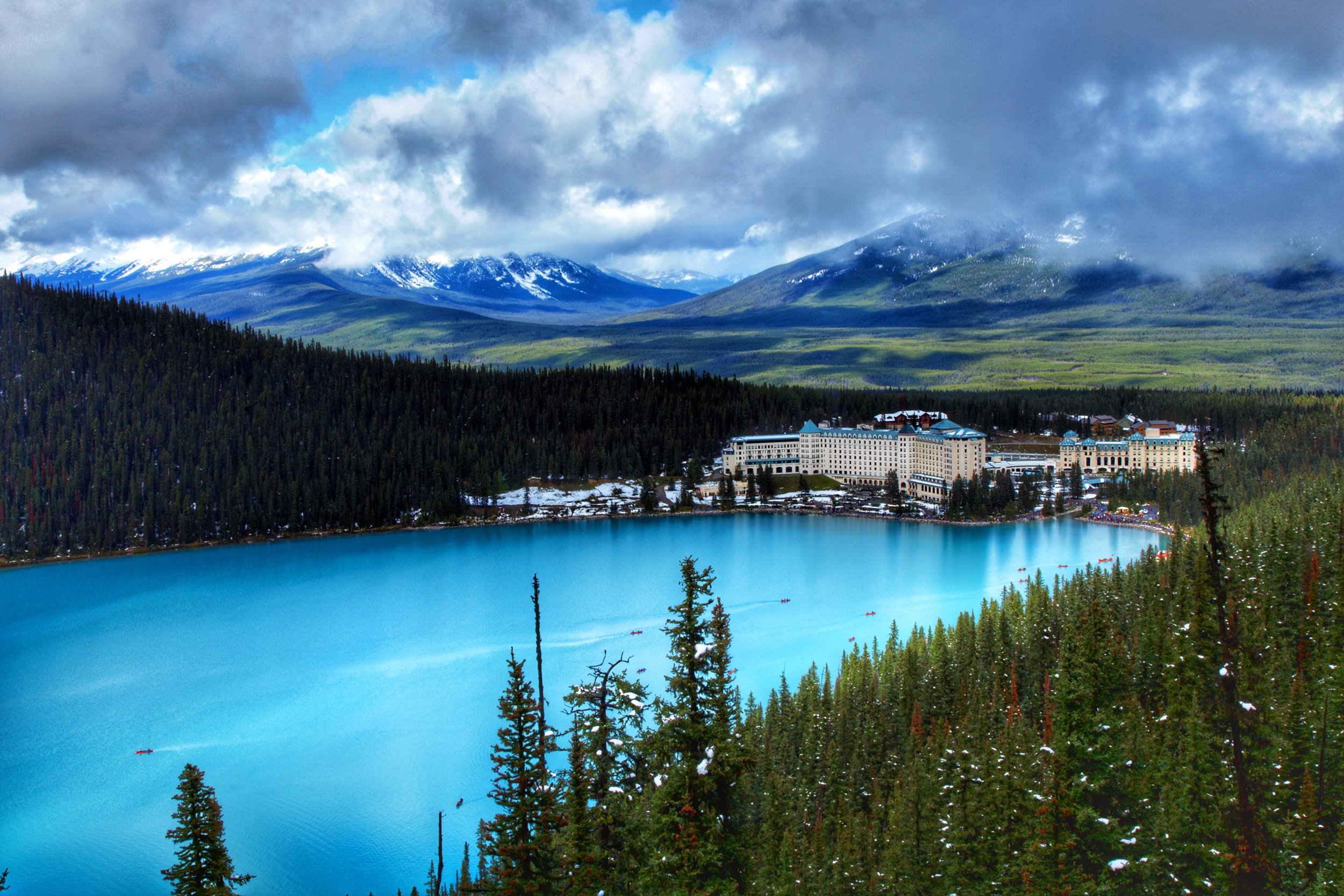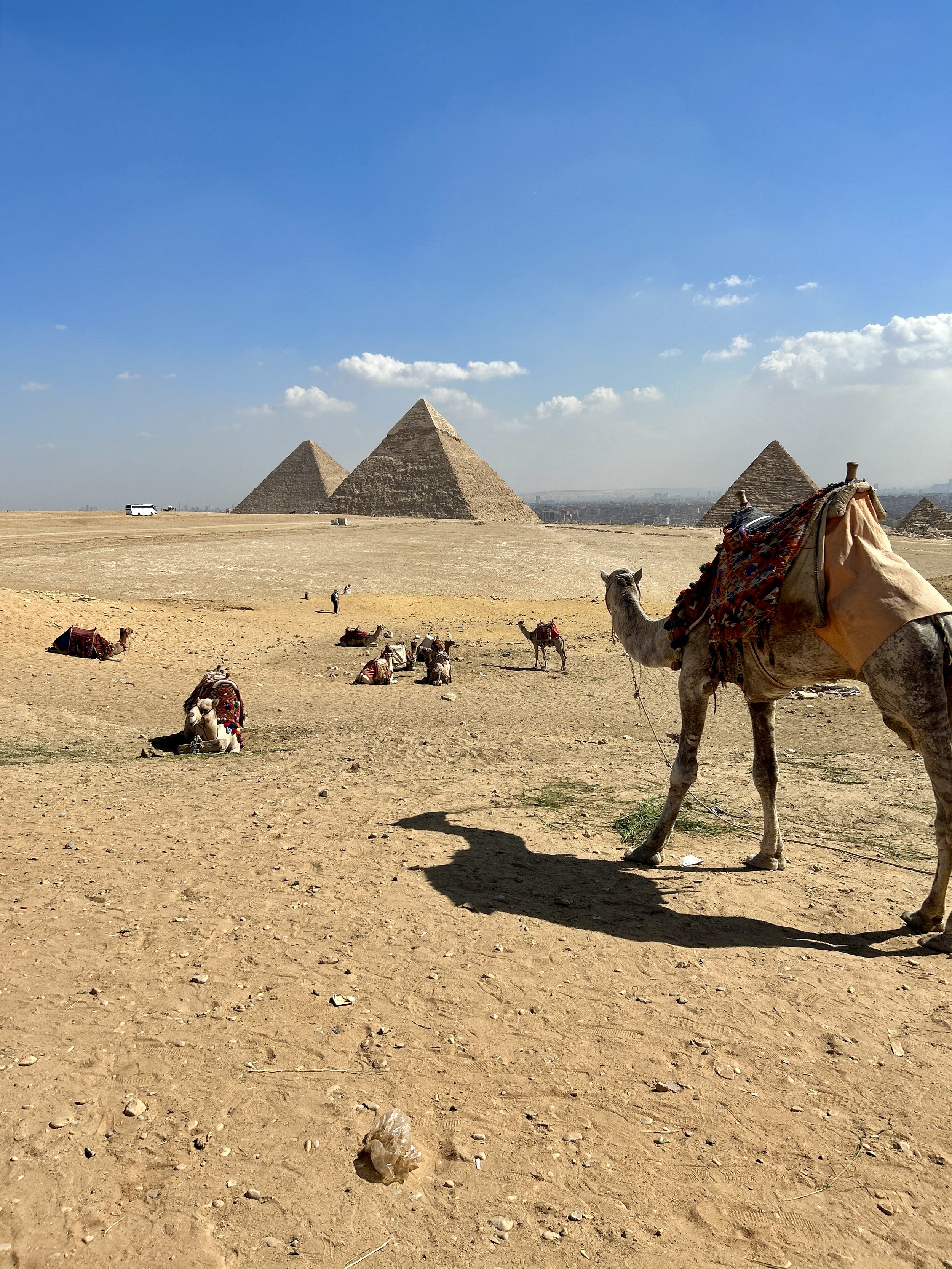10 Awesome Facts About Banff National Park
“Even a bad day in the mountains is still better than a great day in the office.”
Banff National Park is 2,564 square miles of serene beauty located just west of Calgary in the Canadian province of Alberta. It is visited by hundreds of thousands of people a year and boasts some of the best views of the rockies in all of North America. Adding on the incredible beauty of it’s alpine lakes, snow-capped peaks, waterfalls and all the adventurous things you can do here year-round, it is a destination that should easily land on your bucket list.
For many Americans, we simply overlook this backyard beauty and often opt for more places oversees, but here are ten awesome facts designed to get Banff on your mind. There’s a reason we have a tour going here in the summer, and I assure you, having been there, Banff National Park has some amazing sights to behold.
Let’s get to it!
Banff Park originally started as a 10-square mile reserve around the Sulphur Mountain Hot Springs
Yes, there are natural hot springs on Sulphur Mountain you can visit year-round. It is somewhat of a spa now, but you can take a nice dip in-between the hike up Sulphur Mountain and can even take the gondola down if you wish. At the top of Sulphur Mountain there are a plethora of restaurants with incredible views in all directions of Banff Town and the rest of the Canadian Rockies, too.
2. Banff National Park has over 1,000 miles of hiking trails and is the second largest Canadian National Park
Founded in 1883 by three railway workers, Thomas McCardell, William McCardell and Frank McCabe (officially), Banff has grown from it’s ten mile radius to over 2,564 square miles and has over 1,600 kilometers or hiking trails. That’s 1,000 miles of hiking for you US folk.
Not to mention, Banff is HUGE! The second largest National Park only behind Jasper National Park (to the north of Banff) and is connected by one of the most scenic drives in the entire world. The Canadian Transcontinental Highway.
3. Mountains in Banff National Park are 45 to 120 million years old
You want some real info that will blow you away? How about mountains that are older than dinosaurs? Dinosaurs lived approximately 66 million years ago and the mountains that exist in Banff today are are old as 120 million years! Carved out by glaciers, the valleys and peaks of Banff are still home to over 1,000 glaciers that grow and recede with the winter and summer months.
In many places, such as the Columbia Icefields, you can drive, climb and hike on the glaciers year round. This is also something we do on our Banff National Park tour.
4. Banff was declared a UNESCO World Heritage Site in 1984
Banff wasn’t declared a World Heritage Site until 1984 and was part of four Canadian National Parks to be inducted at the same time (Banff, Jasper, Yoho and Kootenay) that all together make up the Rocky Mountain Parks World Heritage Site.
Banff National Park is also home to the following seven National historic sites: Skoki Lodge, Abbot Pass Hut, Howse Pass, Cave and Basin, Fairmont Banff Springs Hotel, Banff Park Museum, and the Cosmic Ray Station on Sanson Peak.
5. The Highest Mountain in Banff is Mount Forbes at 11,850 feet
While there may be fourteeners in the Colorado Rockies, Banff’s highest mountain is only at an elevation of 11,850 feet. However, just outside of Banff’s borders, Mount Assiniboine in nearby Kootenay National Park is slightly higher at an elevation of 11,870 feet (3,618 meters).
Either way, there are plenty of mountains to hike if elevation is your thing. Nearly all of the mountains in Banff are snow-capped for the entire year.
6. Lake Minnewanka is actually man-made (and you can dive it!)
Banff National Park’s biggest lake is actually man-made and was damned up to bring water closer to Banff town. In the late 1800’s and early 1900’s, Minnewanka Landing was a small mining town and operation on the banks of a nearby river and was purposely dammed in the mid 20th century to bring more fresh water to a growing Banff town.
Minnewanka Landing was left in tact and still remains at the bottom of Lake Minnewanka now and is often visited by divers looking for an underwater adventure. The 1912 Dam Blockhouse is the most visited place from Minnewanka Landing. You can dive here year round as well, but the hiking on the shores of the lake are just as exceptional and provide incredible views. Boat tours are also offered here, too.
7. Lake Louise is the highest permanent settlement in Canada and the most photographed lake in the world
Lake Louise is at an astonishing elevation of 5,052 feet (1,540 meters) and is the highest permanent settlement in all of Canada. Famous for its lake Agnes Tea House, grizzly bears, AMAZING hotels, skiing, the Victoria Glacier, waterfalls, incredible hiking and of course, multiple lakes. Lake Louise has often been dubbed as Canada’s, ‘Diamond in the Wilderness,' and the “Hiking Capital of Canada.’
At Lake Louise you can hike up to two different viewpoints past the Lake Agne’s Tea House (where you can stop for tea and snacks at 7,500 feet) known as the ‘Little Beehive’ and the ‘Big Beehive’ that both offer sweeping panoramic views of the lush Canadian Rockies and valleys in-between. It is an all-day hike but a spectacular viewing point!
Another fun fact: Lake Louise is one of the most visited and photographed lakes in the world and is home to the world-renowned Fairmont Chateau. Although it was first called Emerald Lake, the lake’s name was later changed to Lake Louise after Princess Caroline Alberta Louise, daughter of Queen Victoria and wife of Canada’s Governor General.
8. Moraine Lake and Peyto Lake are both glacially fed lakes the reason why they are so blue
Moraine Lake and Peyto (pronounced Peeh-toh) Lake are both two of Banff National Park’s most photographed lakes and are often categorized by their unique blue hue. The main reason for both of their bright blue colors is due to the fact they are both glacially-fed year round.
Moraine Lake is closely situated to Lake Louise and is situated in the Valley of the Ten Peaks at an elevation of: 6,183 feet (1,885 meters) and has a surface area of .5 miles. Petyo Lake (second pictured) is at an elevation of 6,100 feet (1,860 meters) and has a surface area of 2.0 square miles
9. Johnston Canyon is the busiest hike in the Canadian Rockies and meanders through multiple waterfalls amidst a tight narrow canyon
Johnston Canyon is an incredibly cool hiking path through the forests of the Canadian Rockies. Once a wildly flowing river, the canyon is now home to a 2.5 mile walking path through a tight, narrow canyon. Thousands of people walk this path each and every day and on occasion, Grizzly Bears can be seen on the path itself.
Although there are multiple handrails, the path itself is not for the faint of heart, between the cliff-mountain staircases and multiple access points to the Upper and Lower Falls.
10. Skiing was introduced to Banff in 1909 by Swiss and Austrian mountaineers
Although Banff town is surrounded by a ton of mountains, skiing was never a thought until Swiss & Austrian mountain guides came over from Europe to develop the town’s mining operations in the early 1900’s. Banff Town itself is at an elevation of 4,537 feet and is the highest populated town in Canada. Deriving its name from Banffshire, Scotland, the birthplace of two of the original directors of the Canadian Pacific Railway.
Bonus: There is a legendary ‘Castle in the Wilderness’ and it is the most visited landmark in Banff. It is the crown jewel of luxurious resort hotels on the Canadian Pacific Railroad. The Banff Springs, which opened in 1888 is part French Chateau and part Scottish Baronial Castle.
Lastly, if you didn’t know….Banff is home to over 53 species of mammals and an astonishingly incredible amount of diversity of wildlife. The wide range of habitats found in the park is in part, due to various elevation, climate changes. Large animals found in Banff are commonly Elk, Bighorn Sheep, Mountain Goats, Grizzly Bears, Black bears, Mountain Caribou, Moose, Wolves, Hoary Marmots, Wolverines, Bald Eagles, Beavers, Owls and Pumas. And according to the Great Canadian Parks, there are 996 species of trees, grass and flowers.
Banff National Park is open all year round and has a peak season of July and August. Ready to go, yet?
Click here for all the details on our summer trip to Banff and leave us a comment down below about your favorite thing about Banff!
Got a question? Drop us a line at: cam@voyedgerx.com




































